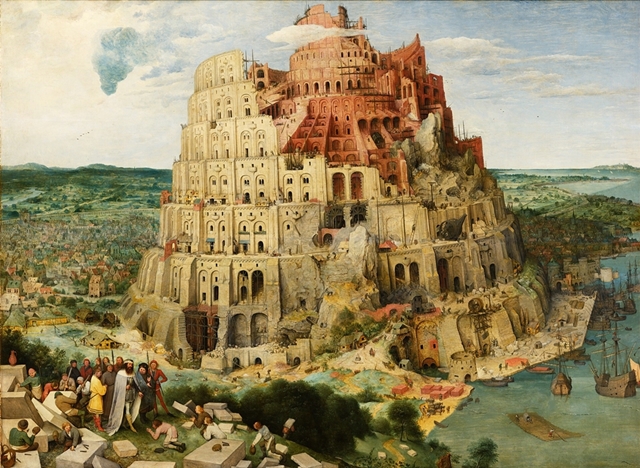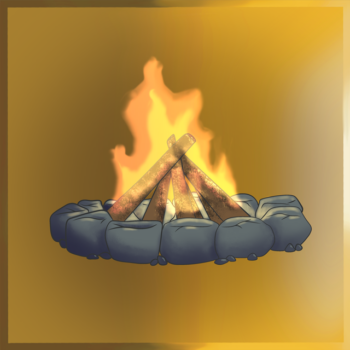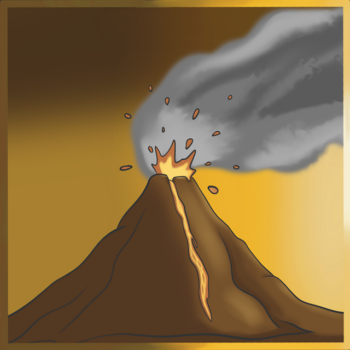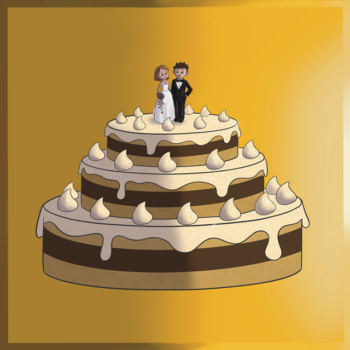Pieter Bruegel the Elder: The Tower of Babel (1563).

Lucas van Valckenborch: Tower of Babel (1594).
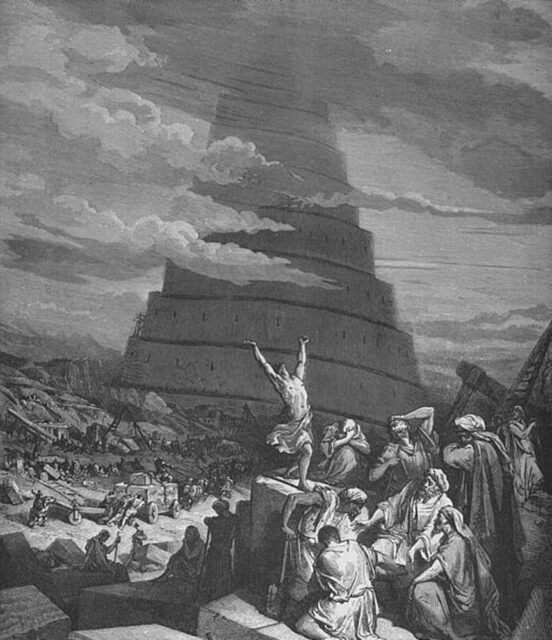
Gustave Doré: The Confusion of Tongues.
Definition:
“Babel’s Tower” is a fictional tower from the tale of the Tower of Babel in the Book of Genesis in the Bible, purportedly constructed by the descendants of Noah in the city of Babel in the land of Shinar (later known as Babylon in Mesopotamia) as an attempt to build a structure that could reach up to heaven.
Etymology:
The term “Babel” comes from the Hebrew word “בָּבֶל” (Bavel), which is derived from the Akkadian word “Bāb-ilim,” meaning “Gate of God.” The name is also associated with the Hebrew verb “balal,” which means “to confuse” or “to mix,” reflecting the confusion of languages that took place. In today’s language, “babel” or “babbling” is used to mean “talking nonsense.”
“Bibel” and “Babel” are homophones. Homophones are words that have the same or similar pronunciation, but have different meanings and often also different spellings.
Description:
Mesopotamia refers to a historical region that includes parts of present-day Iraq, as well as areas in present-day Syria, Turkey, and Iran, which was one of the early centers of civilization where writing, religion, and complex societies emerged.
According to the biblical narrative, God believed that if the whole world spoke the same language, they could achieve the impossible. Therefore, God disrupted the construction by manipulating the language of the builders, causing them to be unable to communicate with each other, leading to the abandonment of the project and the dispersal of the people across the earth.
Symbolism:
The Tower of Babel symbolizes a failed attempt to build a world system without God.
The Tower of Babel symbolizes the origin of linguistic diversity and the challenges of communication among people. In a broader sense, it can be seen as a metaphor for any ambitious project that fails due to confused language.
Etemenanki was a massive ziggurat in Babylon, dedicated to Marduk, the city’s chief deity. Its name means “The Temple of the Foundation of Heaven and Earth,” reflecting its religious and symbolic importance. Built as a stepped pyramid, it likely stood around 91 meters tall, with a square base of similar width. Each level was smaller than the one below, leading up to a temple at the top where rituals and offerings were made. Constructed with sun-dried bricks at its core and fired bricks on the exterior, it was one of the most impressive structures of its time.
Over the centuries, Etemenanki was destroyed and rebuilt multiple times, with its most significant restoration undertaken by Nebuchadnezzar II. By the time Alexander the Great arrived in Babylon, the structure was already in ruins. He ordered its restoration, but after his death, the project was abandoned, and the ziggurat was eventually dismantled.
Many believe Etemenanki inspired the biblical story of the Tower of Babel because of its scale, design, and location in Babylon. Ancient accounts describe it as an enormous structure reaching toward the heavens, much like the tower in the biblical narrative. Babylon itself was a major cultural and linguistic center, which could have contributed to the association with language confusion in the story. While the historical details of Etemenanki differ from the biblical account, its imposing presence and significance in Mesopotamian religion likely influenced later traditions about a great tower built in defiance or ambition.
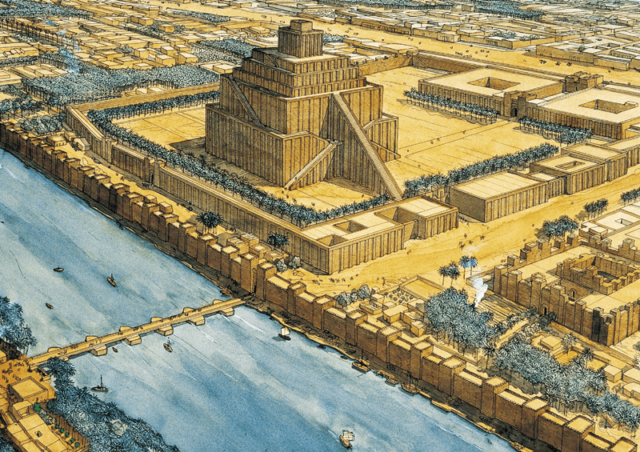
The appearance of the Tower of Babel is described in the Bible and the Book of Jubilees as a tower built of brick and asphalt, its height aiming to reach the heavens, with one side higher than the other. The tower was left unfinished, indicating that its top was missing. This carries the same symbolism as the Illuminati symbol. Similar symbolism can be found in well-known buildings such as the Colosseum in Rome, Italy, and the European Parliament in Strasbourg, France (also known as the European Parliament).
One can also observe that the logo of the European Parliament and the Plenary Chamber in Strasbourg, France, consist of several Illuminati symbols pointing towards each other in a semicircle, symbolizing multiple different countries/languages coming together. The EU flag and the semicircle together are equivalent to the Islamic symbol.
In recent times, the prominent feature of the Tower of Babel has become the spiral ramp that wraps around the tower. This can be seen in, among other things, the conlang flag, also known as the conflag. The flag depicts the Tower of Babel against a sunrise, which is an Illuminati symbol where the sun is equivalent to the All-Seeing Eye at the top of the pyramid. The flag is used as a symbol for constructed languages in general and for the broader conlang community, which includes both creators and users of constructed languages.
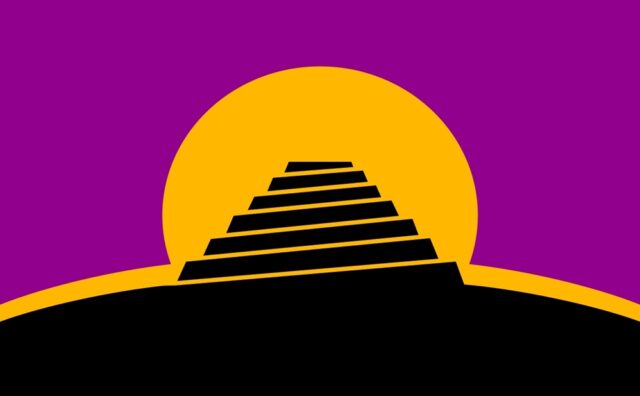
The spiral ramp around the tower can also be recognized in how a poop is often illustrated, such as in the universal poop emoji. The connection between the Tower of Babel and poop originates from the symbolism of the ox head and ox dung. The English words “Babel” and “Bible” are homophones of “by bull,” which means “from ox” or “from bull.”

It was humans’ idea to build a tower up to heaven that caused God to stop them. The symbolism aligns with the World Trade Center, which was two towers in Lower Manhattan, New York City, that were the world’s tallest towers constructed to promote international trade and business, which were attacked and destroyed on September 11, 2001.
In George Orwell’s novel “Animal Farm,” the animals are mistreated by the farm owner. The pig Snowball leads a revolution that drives the farm owner away from the farm, before they begin to take care of themselves through cooperation. Snowball plans to build a windmill to simplify their lives by providing them with electricity, before the boar Napoleon manages to chase Snowball away from the farm and convinces the rest of the animals on the farm to believe that Snowball wanted to bring the farm owner back. The animals on the farm build the windmill under Napoleon’s command, but the only ones benefiting from the electricity generated by the windmill are the pigs on the farm, while the workers are paid minimal wages for all their hard work. Snowball returns with the humans and destroys the windmill. However, the animals on the farm manage to chase them away again. As the story unfolds, the windmill becomes a symbol of how Napoleon and the other pigs’ authoritarian regime exploit the animals for their own gain. The animals are forced to work hard to rebuild the windmill, and they suffer from poor conditions and food shortages, while the pigs’ privileges increase. The windmill becomes a symbol of how the rulers manipulate the ideals of community and equality to maintain their own power and privileges. The rotor of the windmill becomes a symbol of the vicious cycle of a new authoritarian regime after the revolution.
Snapshots from the movie “Animal Farm” (1954):
The Great Mosque of Samarra, located in present-day Iraq, was constructed in the 9th century during the Abbasid Caliphate under Caliph Al-Mutawakkil. Once the largest mosque in the world, it is best known for its unique spiraling minaret, the Malwiya Tower, which rises 52 meters (171 feet) above the surrounding ruins. The mosque itself, built between 848 and 852 CE, reflected the grandeur and ambition of the Abbasid rulers, demonstrating their commitment to Islam and their architectural advancements.
The mosque’s most distinctive feature, the Malwiya Minaret, has often been associated with the biblical Tower of Babel. This connection is largely symbolic rather than literal, as the historical Tower of Babel’s exact form and location remain uncertain. However, the visual similarities are striking—both structures are described as towering, spiral-like constructions reaching towards the heavens. In biblical tradition, the Tower of Babel was built by humanity in an attempt to ascend to divine heights, leading to God’s intervention and the confounding of languages. The Great Mosque’s minaret, while serving a religious function, similarly rises in a helical form, creating an architectural echo of the ancient myth.
The Abbasid Caliphate, under which the mosque was built, ruled from Baghdad, which was near the legendary site of Babylon. This proximity further strengthens the symbolic connection between the mosque and the Tower of Babel, as both structures represent human aspiration and monumental architectural ambition. Some scholars suggest that the Malwiya Minaret’s design may have been influenced by earlier Mesopotamian ziggurats, such as the Etemenanki, a temple dedicated to Marduk in Babylon that some believe was the historical inspiration for the Tower of Babel.
Unlike the Tower of Babel, which was associated with divine disapproval, the Malwiya Minaret was a symbol of Islamic authority and religious devotion. It was used to call the faithful to prayer, emphasizing the unifying role of Islam, in contrast to the division of languages that occurred at Babel. Yet, both structures reflect an ancient human desire to build upward, reaching toward the heavens, whether in defiance or devotion.
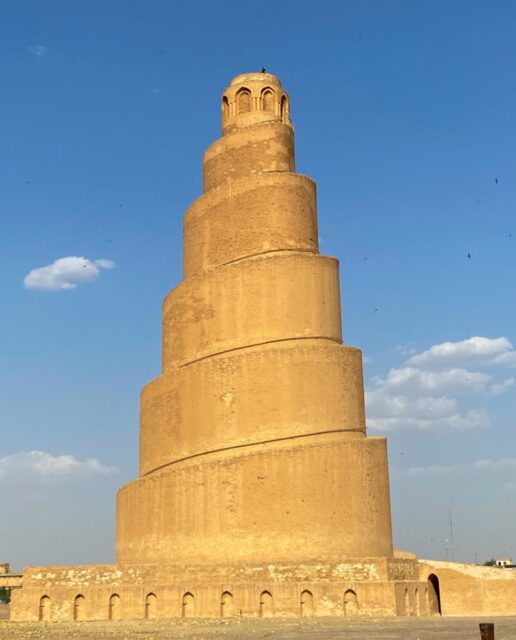
In the stop-motion movie “Chicken Run: Dawn of the Nugget” (2023), chickens trapped in a high-tech poultry processing plant—disguised as “Fun-Land Farms”—are controlled through electronic collars that hypnotize them into becoming dumb, compliant, and blissfully unaware of their fate. The illusion of happiness is reinforced by their artificial surroundings, including a hill with a glowing sun at its peak—symbolizing the Illuminati pyramid.
The tiered structure of the hill gives it a striking resemblance to the Tower of Babel.
One striking scene demonstrates this sinister technology: a chicken is remotely controlled as the hill splits open, revealing an escalator leading upward. As she ascends, the other chickens watch in awe and envy, mirroring the way society admires those who climb the corporate ladder within the Illuminati structure. One chicken remarks, “She’s won the prize,” and the entire crowd joyfully chants, “What a lucky ducky!”
Upon reaching the summit, the chicken steps through the glowing sun—vanishing from the fun-land—before the chilling sound of slaughter is heard. Moments later, a bucket of chicken nuggets is presented to the human operators of the factory, revealing the dark truth behind the illusion.
This scene serves as a powerful metaphor for the deception society lives under—believing that climbing the Illuminati pyramid leads to success and fulfillment, when in reality, the perceived rewards are an illusion, and the negative consequences far outweigh the perks.
Click to watch the video clip.
Articles:
A
Definition: The letter “A” is the first letter of many alphabets, including but not limited to the modern English alphabet. Etymology: The symbol for the letter “A” originates from the…
Bonfire, Campfire and Pyre
Definition: A “bonfire,” or “campfire,” is a controlled outdoor fire. A “pyre” is a structure, usually made of wood, for burning a body as part of a funeral rite or…
Illuminati
Definition: “Illuminati” refers to individuals who understand how language, religion, and the world system are scams. Etymology: The term “Illuminati” originates from Latin and means “the enlightened.” It is derived…
Seal of Solomon
Definition: The “Seal of Solomon,” also known as the “Ring of Solomon,” is a symbolic emblem attributed to King Solomon, a wise and powerful monarch in Jewish, Christian, and Islamic…
St. John’s Bonfire
Definition: The “St. John’s Bonfire,” also known as “St. John’s Eve Bonfire” or “Midsummer Bonfire,” is a large bonfire traditionally lit on the evening of June 23rd, the eve of…
Tower Cake
Definition: A “kransekake,” meaning “wreath cake”, also known as a “tower cake,” is a Danish and Norwegian traditional cake made of almonds, sugar, and egg whites. Etymology: The term “tower…
Volcano
Definition: A “volcano” is a geological formation, typically a mountain, where molten rock (magma), ash, and gases from the Earth’s interior erupt through the Earth’s crust. Etymology: The word “volcano”…
Wedding Cake
Definition: A “wedding cake” is a special cake served at a wedding reception following the wedding ceremony. It is often multi-tiered, elaborately decorated, and designed to reflect the couple’s tastes…
Witch’s Hat
Definition: A witch’s hat is a hat worn by a witch. It’s typically a tall pointed, cone-shaped black hat with a wide brim. Etymology: The term “witch” comes from the…
Wizard’s Hat
Definition: A wizard’s hat is a hat worn by a wizard. It’s typically a tall pointed, cone-shaped hat with a wide brim, adorned with stars, moons, or other mystical symbols….
Religion:
The Bible, Genesis, chapter 11, verses 1-9 (NIV): “Now the whole world had one language and a common speech. As people moved eastward, they found a plain in Shinar and settled there. They said to each other, “Come, let’s make bricks and bake them thoroughly.” They used brick instead of stone, and tar for mortar. Then they said, “Come, let us build ourselves a city, with a tower that reaches to the heavens, so that we may make a name for ourselves; otherwise we will be scattered over the face of the whole earth.” But the Lord came down to see the city and the tower the people were building. The Lord said, “If as one people speaking the same language they have begun to do this, then nothing they plan to do will be impossible for them. Come, let us go down and confuse their language so they will not understand each other.” So the Lord scattered them from there over all the earth, and they stopped building the city. That is why it was called Babel—because there the Lord confused the language of the whole world. From there the Lord scattered them over the face of the whole earth.”
The Book of Jubilees, chapter 10, verses 20-21: “And they began to build, and in the fourth week they made brick with fire, and the bricks served them for stone, and the clay with which they cemented them together was asphalt which comes out of the sea, and out of the fountains of water in the land of Shinar. And they built it: forty and three years were they building it; its breadth was 203 bricks, and the height [of a brick] was the third of one; its height amounted to 5433 cubits and 2 palms, and [the extent of one wall was] thirteen stades [and of the other thirty stades].”
